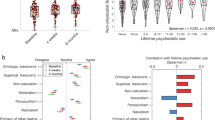The specter of such a scenario resurfaced regularly since the arrival at the White House of Donald Trump, who accuses several countries of manipulating their motto. The tribune world read the followings.
Can the trade war between the United States and China degenerate into a currency war? Since the arrival of Donald Trump at the White House in January 2017, the specter of such a scenario resurfaced regularly. On Thursday, May 23, the US Department of Commerce said it was considering new regulations to impose countervailing duties on countries “undervaluing their currency against the dollar” and “subsidizing their exports.” This was the general information. However, there are more than you need to know now. However, there are more.

In July 2018, the Republican President accused “China and the European Union” of “manipulating their currency by lowering their interest rates.” In February 2017, he criticized Germany for “taking advantage of an undervalued euro,” after accusing Japan of doing the same with the yen.
Mr. Trump seems to think that the relative strength of the greenback is necessarily the result of offensive actions of major foreign central banks. But nothing is less true: it is primarily the fruit of the policy of the Federal Reserve (Fed) itself. At the end of 2015, taking note of the good health of the US economy, it has indeed begun to raise its key rates: they are now between 2.25 and 2.50%, while they are still close to zero in the eurozone and Japan. As a result, investments in the United States offer higher returns than the Old Continent and the Japanese archipelago, attracting investors which mechanically pushed up the dollar’s price in 2017 and 2018.
Does this mean that no country today is acting voluntarily on its motto? The answer is more complex than it seems. Take the Middle Kingdom. It is true that during the 1990s, and until the crisis of 2008, the Central Bank of China (PBoC) accumulated mountains of dollars (held in the form of US Treasury bonds) to maintain an artificially low yuan, to support its exports. But since 2015, his strategy has changed. It intervenes much less, partly because the country’s economic model is evolving: less dependent on exports, it is turning more and more towards its domestic consumption. The situation is complicated here, and that makes the whole thing all the more interesting.
In its latest bi-annual exchange rate report, published in October, the US Treasury admitted that, contrary to Trump’s thunderous statements, China did not manipulate its currency – while leaving it under “surveillance”, with five other countries: India, Japan, Switzerland, South Korea, but also Germany, whose record trade surpluses irritate Washington. In case you need to know more about it, then you need to visit the official page of The tribune world. There you will find all the important parts that you need to know. Surely you will be getting all the information right there.
These are the aspects over which you will know more from the Tribune World. Of course, you will know more about that now.




